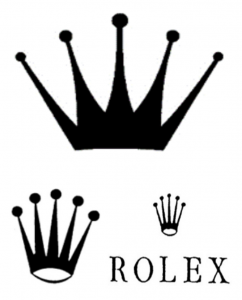BACKGROUND TO THE DISPUTE
On November 2014, PWT A/S, obtained international registration designating the EU of the following trademark for goods, inter alia, in class 25. On June 2016, Rolex SA, filed a notice of opposition to registration for the contested mark, based on the following earlier EU trademarks, for goods in class 14, inter alia. The Opposition Division upheld the opposition.
 PWT filed a notice of appeal before EUIPO against the earlier decision, and the Board of Appeal upheld it as regards goods in class 25. It considered ‘Clothing, footwear, headgear’ in class 25 to be dissimilar to ‘watches’ in class 14. With respect to art. 8.5 EUTMR, it considered that reputation was established but only for the earlier composite mark and just for wrist watches.
PWT filed a notice of appeal before EUIPO against the earlier decision, and the Board of Appeal upheld it as regards goods in class 25. It considered ‘Clothing, footwear, headgear’ in class 25 to be dissimilar to ‘watches’ in class 14. With respect to art. 8.5 EUTMR, it considered that reputation was established but only for the earlier composite mark and just for wrist watches.
Rolex decided to appeal before the General Court against the above contested decision.
DECISION
In this case, the appeal was dismissed, confirming the Board of Appeal’s contested decision where rejected Rolex opposition as regards goods in class 25.
The opposition applicant relied on two pleas in law, alleging infringement of arts. 8.1 b) and 8.5 EUTMR.
As regards the first plea in law, Rolex criticised the Board of Appeal for incorrectly finding that there were no similarities between the goods at issue. The Court agreed with the Board of Appeal in the contested decision, in the sense that those goods were different in nature and intended purpose, the former being intended to dress the human body and the latter to be worn for personal adornment. It added that the fact that the goods at issue may be sold in the same commercial establishments, such as department stores, is not particularly significant, since very different kinds of goods may be found in such shops, without consumers automatically believing that they have the same origin. Furthermore, the mere fact that clothing and watches are designated, in a report by the OECD and EUIPO on the worldwide trade in counterfeits as being capable of being luxury items, is irrelevant for the purpose of establishing any similarity between the goods at issue. In opposition proceedings, the comparison of the goods must concern the description of the goods covered by the marks at issue and not the goods for which the trade marks are actually used.
In the second plea in relation with art. 8.5, Rolex alleged that the contested decision contained errors in the assessment of similarity of the signs and failed to find that the use of the mark applied for would take unfair advantage of, or be detrimental to, the distinctive character or the repute of the earlier composite mark. In this sense, the Court preliminary stated that the applicant’s arguments do not make it possible to identify the injury or injuries set out in Article 8(5) of Regulation No 207/2009 which might be caused to the earlier composite mark, to its detriment, by the use of the mark applied for. By the applicant’s arguments, it only infers that there is a risk of injury, which it does not identify, to the reputation of the earlier composite mark. In this sense, the Court reminds that to claim infringement of art. 8.5, the applicant is obliged to prove that there is a serious risk that one of the types of injury will occur in the future. The annexes cannot therefore serve as a basis for developing a plea set out in summary form in the application by putting forward complaints or arguments which are not contained in that application.
The action must be dismissed and, consequently, the opposition was correctly rejected by the Board of Appeal as regards goods in class 25.
[Case T‑ 726/21, ECLI:EU:T:2023:6, 18/01/2023]


 Español
Español Deutsch
Deutsch